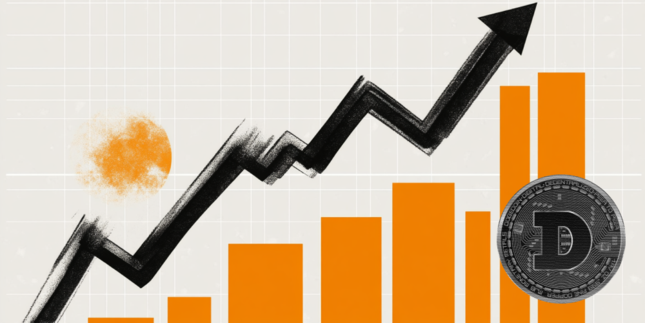- Indian Rupee recovers some lost ground on Monday, despite the firmer US Dollar.
- India's growth and inflation dynamics might convince the RBI to hold rates higher for longer.
- The US ISM Manufacturing PMI will be due on Monday.
Indian Rupee (INR) trades on a stronger note on Monday despite the stronger US Dollar (USD). The Reserve Bank of India (RBI) is expected to maintain a status quo on the monetary policy stance this week and is unlikely to change before the August 2024 MPC review until there is visibility on the monsoon turnout, the sustenance of the growth momentum and the US Federal Reserve’s (Fed) rate decisions," said Aditi Nayar, chief economist, Icra.
India’s foreign capital inflows have been strong, and the country's economic momentum is estimated to continue. While Fed officials hinted that benchmark rates would be cut in the coming months, India's growth and inflation dynamics suggest that the RBI may hold rates high for longer. This, in turn, might provide some support to the INR and create a headwind for the USD/INR pair.
The US ISM Manufacturing PMI will be released later in the day. On Tuesday, the Indian HSBC Manufacturing Purchasing Managers Index (PMI) data will be published, which is estimated to remain steady at 59.2 in March. Moving on, the RBI interest rate decision and the US March Nonfarm Payrolls, due on Friday, will be the highlights for this week.
Daily digest market movers: Indian Rupee remains strong amid global factors
- The Reserve Bank of India (RBI) Monetary Policy Committee (MPC) is expected to keep the repo rate unchanged at 6.50% in the first policy review of 2024-25 on Friday, according to the ET poll.
- In FY25, the inclusion of India's sovereign bonds in JPMorgan's Government Bond Index-Emerging Markets (GBI-EM) index could bring in $30 billion in foreign inflows into India. This is expected to contribute to a rise in the Indian Rupee versus the US Dollar.
- The INR has depreciated 1.4% so far this financial year due to a weakening Chinese Yuan, excessive USD shortage in the system, higher US Dollar Index (DXY), and higher crude prices, as per Bloomberg data.
- The US Personal Consumption Expenditures Price Index (PCE) climbed 2.5% YoY in February, in line with the market consensus. The monthly PCE figure came in worse than expected, rising 0.4% MoM in the same month.
- The US Core PCE, the Fed’s preferred inflation measure, rose 2.8% YoY and 0.3% MoM in February, aligning with the market expectation.
- Investors have priced in nearly 68.5% odds of a first Fed rate cut in June, down from nearly 75% last week, according to the CME FedWatch Tool.
Technical analysis: USD/INR keeps the bullish vibe in the longer term
Indian Rupee trades firmly on the day. The positive outlook of USD/INR remains intact in the longer term since the pair rose above a nearly four-month-old descending trend channel last week.
In the near term, USD/INR holds above the key 100-day Exponential Moving Average (EMA) on the daily chart, with the 14-day Relative Strength Index lying above the 50 midline. This suggests the upward momentum of the pair and the further upside looks favorable.
The first upside barrier for USD/INR is seen at an all-time high of 83.49. A break above this level will see a rally to 84.00 (round figure). On the flip side, a high of March 21 at 83.20 acts as an initial support level for the pair, followed by 83.00 (psychological level, the 100-day EMA). Any follow-through selling below 83.00 could encourage Dollar bears to charge and see a drop to a low of March 14 at 82.80.
US Dollar price in the last 7 days
The table below shows the percentage change of US Dollar (USD) against listed major currencies in the last 7 days. US Dollar was the weakest against the Canadian Dollar.
| USD | EUR | GBP | CAD | AUD | JPY | NZD | CHF | |
| USD | 0.16% | -0.24% | -0.61% | -0.14% | 0.06% | 0.14% | 0.44% | |
| EUR | -0.15% | -0.40% | -0.77% | -0.29% | -0.11% | 0.01% | 0.27% | |
| GBP | 0.24% | 0.40% | -0.36% | 0.11% | 0.29% | 0.43% | 0.67% | |
| CAD | 0.60% | 0.76% | 0.36% | 0.47% | 0.65% | 0.78% | 1.03% | |
| AUD | 0.14% | 0.29% | -0.10% | -0.47% | 0.18% | 0.28% | 0.58% | |
| JPY | -0.05% | 0.12% | -0.19% | -0.65% | -0.17% | 0.10% | 0.39% | |
| NZD | -0.19% | 0.02% | -0.37% | -0.74% | -0.27% | -0.09% | 0.30% | |
| CHF | -0.43% | -0.27% | -0.68% | -1.04% | -0.56% | -0.38% | -0.25% |
The heat map shows percentage changes of major currencies against each other. The base currency is picked from the left column, while the quote currency is picked from the top row. For example, if you pick the Euro from the left column and move along the horizontal line to the Japanese Yen, the percentage change displayed in the box will represent EUR (base)/JPY (quote).
Indian economy FAQs
The Indian economy has averaged a growth rate of 6.13% between 2006 and 2023, which makes it one of the fastest growing in the world. India’s high growth has attracted a lot of foreign investment. This includes Foreign Direct Investment (FDI) into physical projects and Foreign Indirect Investment (FII) by foreign funds into Indian financial markets. The greater the level of investment, the higher the demand for the Rupee (INR). Fluctuations in Dollar-demand from Indian importers also impact INR.
India has to import a great deal of its Oil and gasoline so the price of Oil can have a direct impact on the Rupee. Oil is mostly traded in US Dollars (USD) on international markets so if the price of Oil rises, aggregate demand for USD increases and Indian importers have to sell more Rupees to meet that demand, which is depreciative for the Rupee.
Inflation has a complex effect on the Rupee. Ultimately it indicates an increase in money supply which reduces the Rupee’s overall value. Yet if it rises above the Reserve Bank of India’s (RBI) 4% target, the RBI will raise interest rates to bring it down by reducing credit. Higher interest rates, especially real rates (the difference between interest rates and inflation) strengthen the Rupee. They make India a more profitable place for international investors to park their money. A fall in inflation can be supportive of the Rupee. At the same time lower interest rates can have a depreciatory effect on the Rupee.
India has run a trade deficit for most of its recent history, indicating its imports outweigh its exports. Since the majority of international trade takes place in US Dollars, there are times – due to seasonal demand or order glut – where the high volume of imports leads to significant US Dollar- demand. During these periods the Rupee can weaken as it is heavily sold to meet the demand for Dollars. When markets experience increased volatility, the demand for US Dollars can also shoot up with a similarly negative effect on the Rupee.
Information on these pages contains forward-looking statements that involve risks and uncertainties. Markets and instruments profiled on this page are for informational purposes only and should not in any way come across as a recommendation to buy or sell in these assets. You should do your own thorough research before making any investment decisions. FXStreet does not in any way guarantee that this information is free from mistakes, errors, or material misstatements. It also does not guarantee that this information is of a timely nature. Investing in Open Markets involves a great deal of risk, including the loss of all or a portion of your investment, as well as emotional distress. All risks, losses and costs associated with investing, including total loss of principal, are your responsibility. The views and opinions expressed in this article are those of the authors and do not necessarily reflect the official policy or position of FXStreet nor its advertisers. The author will not be held responsible for information that is found at the end of links posted on this page.
If not otherwise explicitly mentioned in the body of the article, at the time of writing, the author has no position in any stock mentioned in this article and no business relationship with any company mentioned. The author has not received compensation for writing this article, other than from FXStreet.
FXStreet and the author do not provide personalized recommendations. The author makes no representations as to the accuracy, completeness, or suitability of this information. FXStreet and the author will not be liable for any errors, omissions or any losses, injuries or damages arising from this information and its display or use. Errors and omissions excepted.
The author and FXStreet are not registered investment advisors and nothing in this article is intended to be investment advice.
Recommended content
Editors’ Picks

EUR/USD keeps losses below 1.1400 ahead of EU PMI data
EUR/USD holds losses below 1.1400 in the European morning on Wednesday. The Euro stays defensive ahead of the German and Eurozone preliminary PMI data while the US Dollar pauses its recovery mode led by Trump's backpedaling on the US-China trade war and Powell. US PMI also awaited.

GBP/USD stays weak near 1.3300, UK PMI eyed
GBP/USD is off the lows but remains under pressure near 1.3300 in early Europe on Wednesday. The pair stays weak as investor appetite shifts back toward US assets, including the US Dollar, buoyed by a more optimistic tone from US President Donald Trump. UK/US PMIs are next in focus.

Gold price sticks to intraday losses amid positive risk tone; still holds comfortably above $3,300
Gold price moves away from the all-time peak touched on Tuesday amid receding safe-haven demand. Easing US-China tensions remains supportive of the risk-on impulse and weighs on the XAU/USD pair. The downside for the commodity seems limited as the USD bulls seem reluctant amid Fed rate cut bets.

Dogecoin lead double-digit gains across meme coins, with Shiba Inu, PEPE and BONK skyrocketing to new monthly highs
Top meme coins Dogecoin, Shiba Inu, PEPE and BONK lead the meme coin sector with double-digit gains on Wednesday following the crypto market recovery.

Five fundamentals for the week: Traders confront the trade war, important surveys, key Fed speech Premium
Will the US strike a trade deal with Japan? That would be positive progress. However, recent developments are not that positive, and there's only one certainty: headlines will dominate markets. Fresh US economic data is also of interest.

The Best brokers to trade EUR/USD
SPONSORED Discover the top brokers for trading EUR/USD in 2025. Our list features brokers with competitive spreads, fast execution, and powerful platforms. Whether you're a beginner or an expert, find the right partner to navigate the dynamic Forex market.



